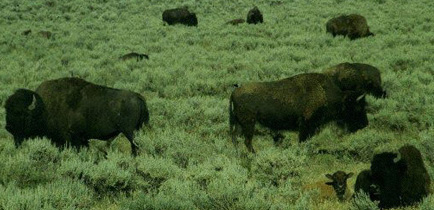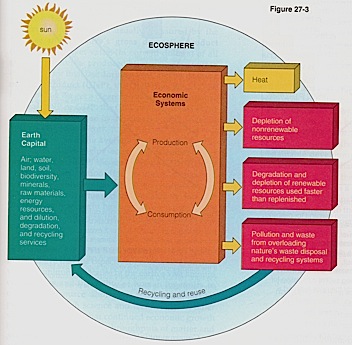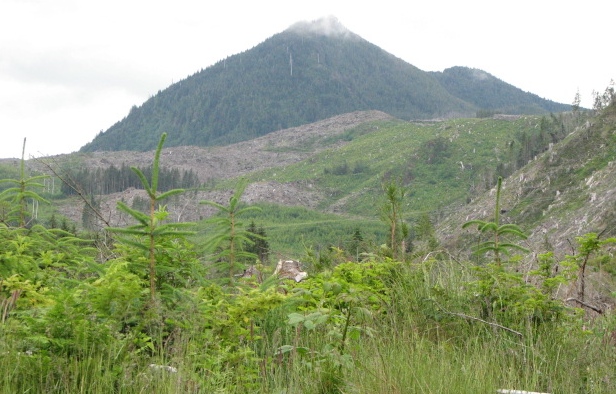15 Saving our Natural Capital
Outline | Overview | Methodology | Means | Argument | Summary | Chapter
Vocabulary
origins of natural wealth, biotic capital, solar savings & surplus, auxiliary systems, booster capacity, WEAL from weald, saving vs. spending, utility as a dead-end, preservation and capital preservation, inflation, conserving productivity, investing, seed corn, thrift, counter-cyclical compensation.
“To keep every cog and wheel is the first precaution of intelligent tinkering.” said Aldo Leopold.
p. 310.
 |
Human economic order |
|---|---|
| Ecosystems drive natural services | |
| Earth capital as a set of meshed gears. | Economic relations are mediated by cuture and society. |
Earth capital or natural capital are synonymous sources of biological wealth and sustain necessary ecosystem services.
G. Tyler Miller's conceptual rendition of natural capital flows.
Outline
Overview: landscape modification and losses in biological diversity and ecosystem integrity; hence services { 310
1. Why should we preserve biodiversity { 312
2. Strategies to protect biodiversity { 313
3. Reserves and Corridors { 318
4. Beyond reserves and corridors { 321
5. Ecosystem services + biodiversity ≥ Well being, measures of { 323
6. Restoration Ecology { 324
7. Conserving Natural Capital { 328
Impacts of logging on the Oregon coastal mountain landscape.
“Moreover, restoration is almost always far more difficult and costly than the activities that caused the damage and led to a decline of one or many species in the first place.”
Types of ecological impacts that weaken functional structures, and thereby diminish natural capital:
- disruption
- damage
- destruction
“To what degree are any populations, species, or ecosystems essential?”
311
1. Why should we preserve biodiversity
{ 312
As we’have seen, however, those disappearing organisms are critical
elements of humanity’s natural capital, the ecosystems that provide
the steady flow of natures goods and services on which we all depend.”
“. . . halting the depletion of that capital.”
312
Pollinator services are worth an estimated $14 billion per year
313
2. Strategies to protect biodiversity
{ 313

“conserving as much habitat area as possible in species rich ‘hot-spots.’”
313
“limit the harvesting of stocks of the organisms that are being depleted and to restrict the use of toxic substances such as pesticides that threaten other organisms.”
313-314
Endangered species act of 1973 – “shelter large stretches of habitat and preserve the ecosystem services that the habitat provides.…umbrella species”
315
Thomas Lovejoy – “debt for nature swaps” – “it’s a win-win –win situation.”
317
{ 318
“the establishment of reserves,. . . .alone cannot accomplish the job of conserving the broad range of of Earth’s species diversity.”
318
“Because of the problems posed by those anthropogenic barriers, habitat fragmentation, and accelerating climate change, the topic of ecological corridors–slender reserves connecting larger ones–is gaining more attention.”
319
“Careful research s showing that corridors can be very effective.”
319-320
“habitat fragments connected by corridors conserve more native animal and plant species than do isolated fragments.”
320
marine reserves – “boost production of fish and shellfish populations in surrounding area. …migrants from the reserves can replenish adjacent fisheries.”
320-321
4. Beyond reserves and corridors
{ 321
“the reserve approach…even with the development of corridors is inadequate to the task of protecting most biodiversity and ecosystem services on a broad scale.”
321
“countryside biogeography” – “make already disturbed areas more hospitable to crucial elements of biodiversity.”
322
Nutrient cycling is regulating
Soil formation is provisioning
Primary production is cultural, aesthetic, & recreational
323
“align this conservation goal [preserve ecosystem services] with financial incentives.”
“spending money to protect watersheds of cities and their biodiversity through incentives for conservation measures among landowners in the watershed area, a strategy that can turn out to be much cheaper than building water purification plants.”
323
“the natural capital project -- developing ways to incorporate ecosystem service values into decisions regarding land use.”
“development of markets for ecosystem services . . . to finance necessary operations.”
324
{ 324
“to restore the habitats that have been seriously degraded or totally destroyed.”
Wildlands project 326
“The reason is that coyotes suppress foxes, raccoons and especially cats, which are deadly predators of birds. In such cases, species such as wolves and coyotes can be considered ‘keystone species, ’ one whose influence on their communities of ecosystems is disproportionately large relative to their abundance. For that reason creating conditions that support large keystone species is an important element of the Wildlands campaign.”
327

rewilding the American west – Buffalo commons
create ecoducts for safe passage of wildlife under highways
“patches of chaparral to isolated for coyotes” to thrive
327
Conserving Natural Capital
Three crucial "drivers" of ecological disruption
“The ultimate issue in conserving biological diversity and ecosystem services is dealing with the drivers that make success increasingly difficult to achieve”
1. human population size and growth
2. over consumption by the affluent
3. use of environmentally faulty technologies
if those critical "drivers are not addressed effectively,
rapidly and with much attention paid to the needs of poor people who depend
directly and often heavily on many of the landscapes and fisheries of concern.”
p. 328.
Impact on “an unprecedented scale”
“nearly a quarter of the world’s land surface is now devoted to crops, shifting cultivation, concentrated animal feeding operations, or freshwater aquaculture; more land has been put under cultivation since 1945 than in the eighteenth and nineteenth centuries combined. . . .”
90 percent decline in fisheries’ stocks
p. 329.
Need to focus on “applied problems.”
“we are spending the Earth’s natural capi tal, putting such a strain on natural functions…that the ability of the planet’s ecosystems to sustain future generations can no longer be taken for granted.”
Walter Reid, p. 330
Summary
“On a more hopeful note, he continued, ‘We can reverse the degradation of many ecosystem services over the next 50 years, but the changes in policy and practice required are substantial and not currently underway.”
p. 330.


